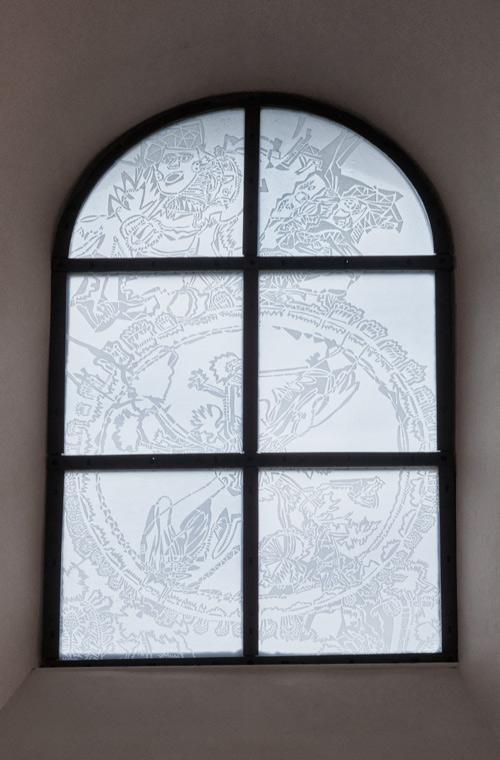Theological programme
Even though thoroughly different artists have been involved in the design of Marienkirche, the works are based on a single overarching artistic concept for the church.
It starts in the west with inexplicable nature of God (in the form of the inexplicable Trinity) and the inexplicability underlying Creation.
And it ends in the east with the Hope of Consummation cycle. The focus of this cycle is the Risen Christ who still bears the stigmata upon him. In this way, the particular strength of the Christian faith is expressed in this special place. After all, for Christians, the hope of consummation does not mean that humans will become perfect gods as was the case in Classical Antiquity (Olympus). Instead, Man with his inadequacies is completed and thus saved. The Risen Christ is surrounded by the perfection of the cosmos and by witnesses to the resurrection (Maria Magdalena and the doubting Apostle Thomas).
The space between these two cornerstones can be seen as “the human way in time”. Here, central contemporary spiritual and theological questions are expressed: time, suffering, vocation, love, divine forgiveness, discernment of spirits, God in the cosmos.
One fundamental aspect of the human way through time is our trust in God. This is how the idea came about of sinking an angel’s wing into the floor of the church. In this church, the angels do not fly over believers but instead believers move across them. This is a reference to Psalm 91: “For he shall give his angels charge over thee, to keep thee in all thy ways. They shall bear thee up in their hands, lest thou dash they foot against a stone.”
Simultaneously, man’s way includes death, symbolized here in the church by a cross.
Father Schickel highlighted one important function of the church when he said that every church needs a “corner to cry in”. This is why the original south entrance to the church was walled up, creating a niche. To be found here is a Madonna, bringing to mind the person who gave the church its name.
As a reminder of days gone by, there is something known as an “Atzmann”, a figure lectern in the entrance which had presumably been biding its time in the Limburg archives since the days of secularization and was recently re-erected in its church after 200 years of absence. It is positioned in the entrance to the church; it holds the gospel reading for the day and focuses on man’s way.


